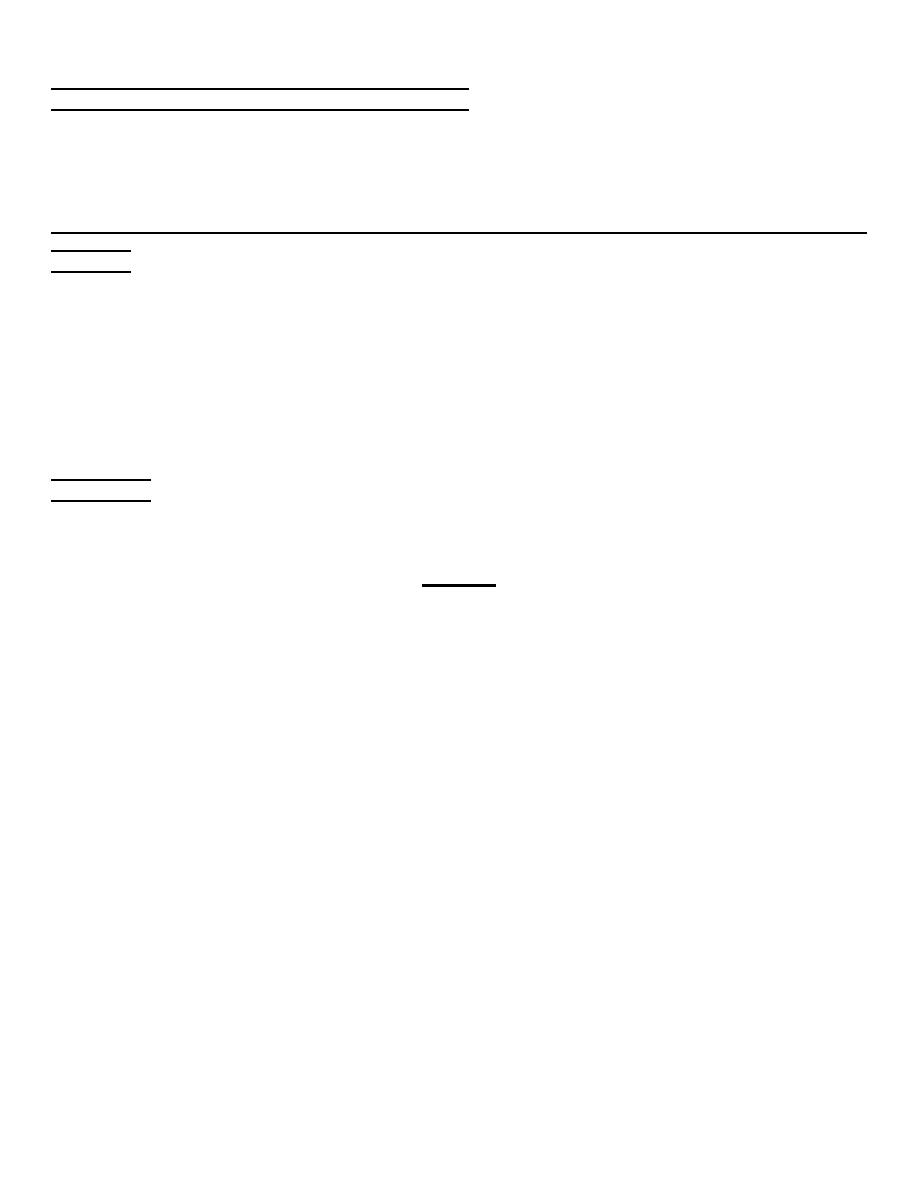
TM 9-2330-381-14
4-95.
GOOSENECK CYLINDER AIR RESERVOIR (CONT)
CAUTION
All fittings and openings must be capped or plugged immediately after opening to
prevent dirt, moisture, or foreign material from entering the hydraulic system or
damage to equipment may result.
REMOVAL
1.
Using a drain pan, tag and disconnect hydraulic hose (1) from straight pipe-to-tube adapter (2) on reservoir (3).
Allow fluid to drain from reservoir into drain pan. Install caps/plugs into hose opening.
2.
Remove breather valve (4) and check valve (5) from reservoir (3). Allow all fluid in reservoir (3) to drain into drain
pan. Install caps/plugs into openings.
3.
Remove safety relief valve (6) and straight pipe-to-tube adapter (2) from reservoir (3). Install caps/plugs into all
openings.
4.
While supporting reservoir (3), remove four nuts (7), lockwashers (8), and reservoir (1). Discard lockwashers.
INSPECTION
1.
Strain drained hydraulic fluid and check for evidence of metal or gasket particles which may indicate impending
failure of streetside gooseneck cylinder.
WARNING
Dry cleaning solvent (P-D-680, Type III) is used to clean parts and is potentially
dangerous to personnel and property. Extinguish all smoking materials and do not
allow sparks or open flames near the work area. Use skin and eye protection and
work in a well-ventilated area. Flash point of dry cleaning solvent is 200F (93C).
2.
Inspect interior of tank for mold, mildew, or fungus. Clean interior of tank thoroughly with dry cleaning solvent to
ensure all mold, mildew, and fungus have been removed. Clean all parts removed with dry cleaning solvent.
3.
Inspect all components for nicks, burrs, dents, corrosion, stripped threads, broken castings, and pitting. If parts
are defective, replace as required.
4-476

